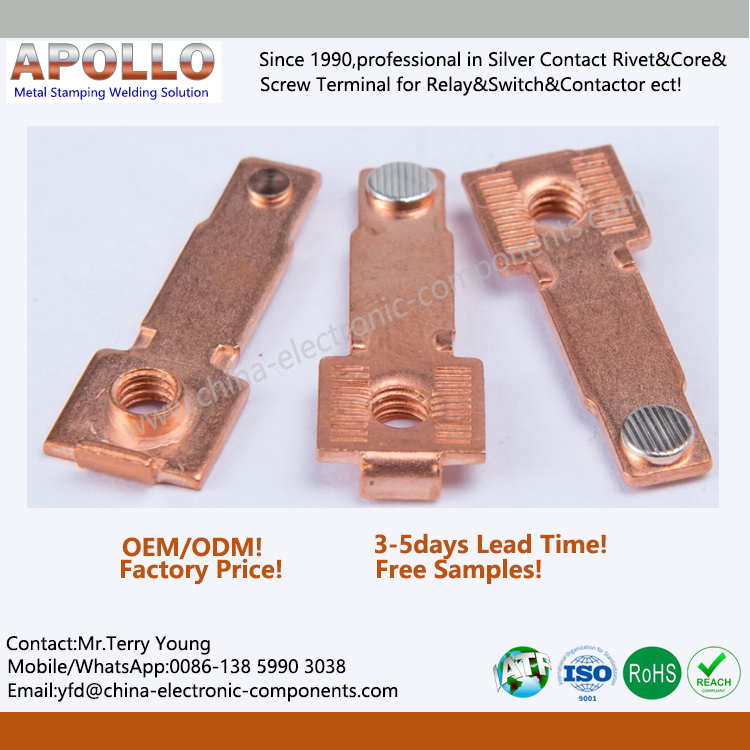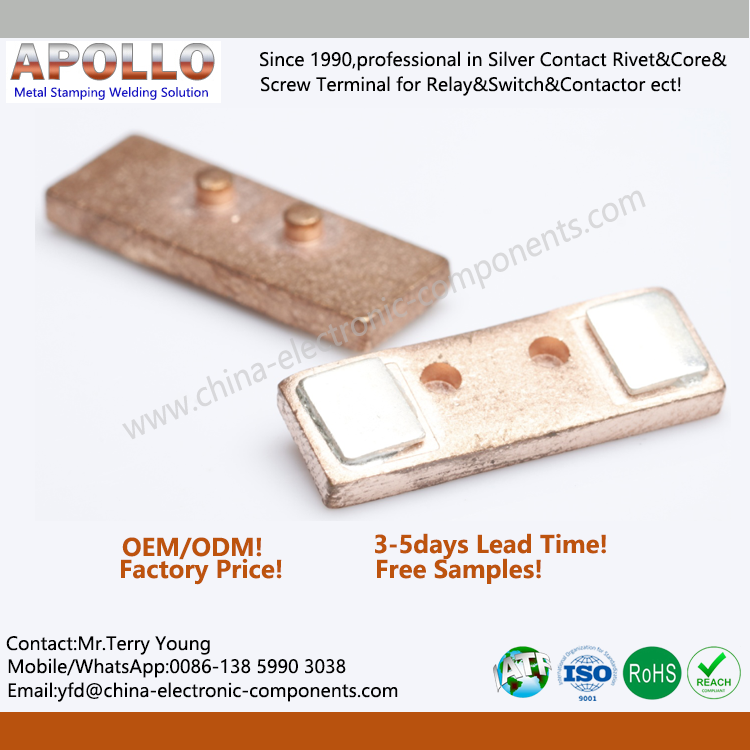
1. The electrical conductivity and thermal conductivity of the Bimetal Contact material should be high to reduce the heat loss when the contact passes current and reduce the contact oxidation of the surface.
2. The melting point and boiling point of the Bimetal Rivet Contact material are high, and the latent heat of melting and evaporation is high, thereby reducing the wear of the contact under the action of arc or spark.
3. The chemical properties of the surrounding environment of the Bimetal Contacts Ag/Cu material should be kept stable, the Bimetallic Contact Rivet resistance should not change much after being polluted by the environment, and the contact resistance should be kept stable.
4. The hardness and elasticity of the Bimetallic Silver Contacts material should be appropriate. When the hardness is too high, the contact area is small and the elasticity is large. When the contacts are closed, wear increases due to bouncing between the contacts;
5. The electrical contact material should be easy to process and weld, saving manpower and low price.
The important requirements of electrical contacts for contact materials for high-power electrical applications are:
① low contact resistance to prevent overheating when passing rated current;
② small electrical and mechanical wear rates and long service life;
③ good welding resistance, Once a fault occurs, the circuit can be disconnected smoothly; ④ The residual current is small and the arc extinguishing ability is strong, and the arc can be quickly extinguished when cutting off a large current, without causing arc reburn or continuous current.
Requirements for weak current Precision Electrical Contacts materials:
① low and stable Composite Contacts resistance, low electrical wear rate and long service life;
② high small arc voltage and small arc current, so that the Cold Headed Bimetal Contacts are as low as possible and arc-free operation;
③ this Electrical Contact Point closing force is small, so mechanical wear is not a significant issue. For DC contacts, it is required that there is little material transfer from one Silver Electrical Contact to another under DC operating conditions.

